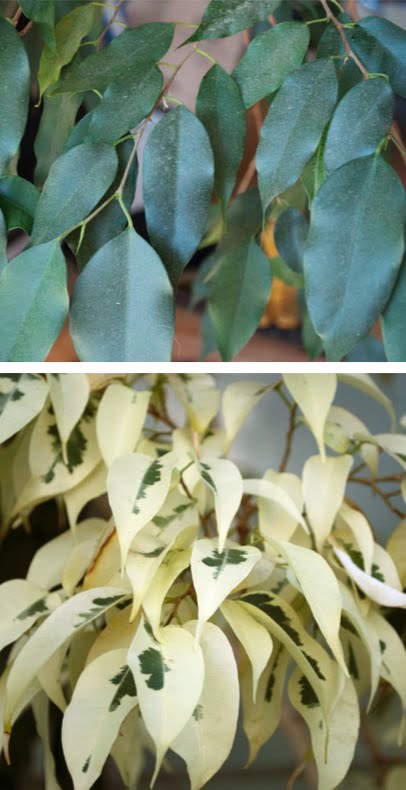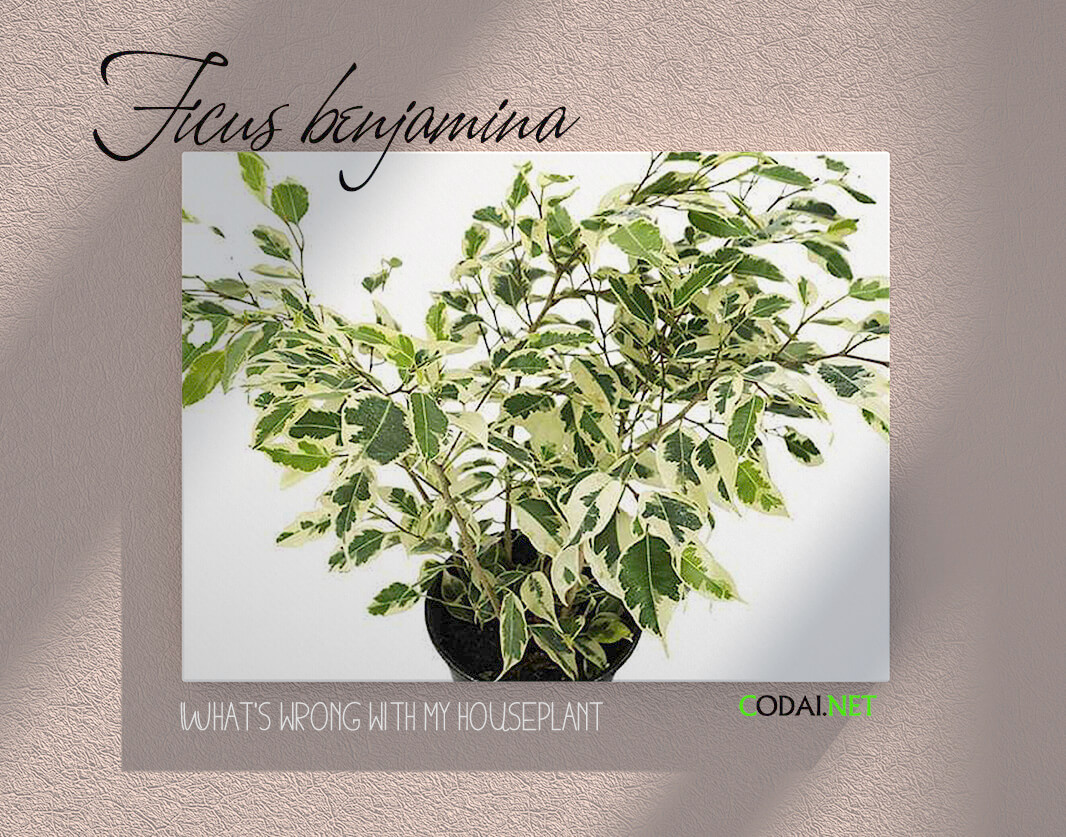[Ebook Việt Hoá] What's wrong with my houseplant (Có vấn đề gì với cây trong nhà của tôi?) - David Deardorff & Kathryn Wadsworth, Chi Ficus - Chi Sung
[Ebook Việt Hoá] What’s wrong with my houseplant?: Weeping fig (Ficus benjamina)
- Biên tập: Dũng Cá Xinh
- Người dịch: Mai Nhung
ENGLISH
Weeping fig (Ficus benjamina), a fast-growing, broadleaf evergreen with gracefully drooping branchlets, well deserves a place of honor in any home. It’s one of the most popular house- plants in the world—relatively low-maintenance, readily available, and very beautiful—but it is unlikely to produce its edible, tiny, true figs indoors. As a houseplant this tree, either single- or multi-trunked, grows to 8 feet tall. The trunk is pale brown and eventually sturdy, but very flexible when young. Growers sometimes braid the trunks of young specimens together and put all three trees in the same pot. The branches are thin and delicate, arching out and drooping down to give a weeping effect. Like all figs, weeping fig has milky white sap that dries to rubber. The lovely leaves of this tree are dark green, 4-inch-long, glossy ovals with long, pointed drip tips. Many plants from humid trop- ical rainforests have leaves with long drip tips that help the leaf shed the abundant rainfall. The edges of the leaves undulate, giving each leaf a slight rippled effect. The leaves dangle from the pendulous branchlets, pointing down toward the ground. Several cultivars have foliage with white or yellow markings.

(above) Weeping fig, varie- gated form.
Weeping fig does not like to be moved about and protests by throwing its leaves on the ground. Find the perfect spot for it and leave it there. If you’ve just purchased your fig and brought it home from the garden center don’t be surprised if it drops its leaves. If you’re up-potting an older specimen expect it to lose quite a few leaves. Be patient with it because it will grow new leaves fairly quickly.
OPTIMUM HOUSEHOLD ENVIRONMENT
Read the Introduction for the specifics of each recommendation.
MEDIUM LIGHT.
The light from a south, east, or west window, filtered by sheer curtains, is just right for weeping fig.
LOW TEMPERATURE.
65 to 75°F day and night.
LOW WATER.
Water whenever the top of the pot- ting medium becomes dry to a depth of 2 inches.
HUMIDITY.
Mist weeping fig occasionally with a spray bottle of water on a mist setting, or use a handheld mister. Put the pot in a saucer or tray of water, making sure the bottom of the pot never sits directly in the water by raising the pot up on pot feet or pebbles.
POTTING MEDIUM.
Use any good organic, well-drained potting soil that incorporates organic fertilizer, mycorrhizal fungi, and other beneficial microbes.
FERTILIZER.
Use any organic fertilizer, in either a powder or liquid formulation, where the first number (nitrogen) is higher than the other two. Apply once a month. Stop feeding in winter.
POTTING.
When weeping fig needs up-potting, shift it to a container with a diameter 4 inches larger than the current pot. Up-pot again every two to three years until it is as big as you want it to get.
PROPAGATION.
Weeping fig is easy to propagate from stem tip cuttings taken in the spring.
COMMON PROBLEMS
Watch for leaf drop (page 249), scale insects (page 262), and leaf spot fungus (page 269)
TIẾNG VIỆT
Cây Si (Ficus benjamina), một loại cây thường xanh lá rộng, phát triển nhanh với những nhánh con rủ xuống duyên dáng, xứng đáng để xuất hiện ở vị trí danh dự trong bất kỳ ngôi nhà nào. Đây là một trong những loại cây trồng trong nhà phổ biến nhất trên thế giới vì chi phí chăm sóc tương đối thấp, sẵn có và rất đẹp nhưng không tạo ra những quả sung nhỏ và ăn được khi trồng trong nhà. Loài cây trồng trong nhà này có thể mọc đơn hoặc nhiều thân, cao tới hơn 2 m. Thân cây có màu nâu nhạt và cứng cáp, nhưng rất dễ uốn khi còn non. Người trồng đôi khi bện các thân của các mẫu non lại với nhau và cho cả ba cây vào cùng một chậu. Những cành cây mỏng, cong ra và rủ xuống . Giống như quả của cây sung ngoài tự nhiên, quả của cây này có nhựa cây màu trắng sữa, khi khô tạo thành cao su. Những chiếc lá của loài cây này có màu xanh đậm, dài 10 cm, hình bầu dục, bóng với đầu nhỏ giọt dài và nhọn. Nhiều cây sống trong rừng mưa nhiệt đới ẩm có lá với các đầu nhỏ giọt dài giúp lá thoát ra lượng hơi nước dồi dào. Các mép của lá không gợn sóng lại tạo hiệu ứng gợn sóng nhẹ cho toàn bộ lá của cây. Những chiếc lá treo lủng lẳng trên những cành con rũ rượi, hướng xuống mặt đất. Một số cây có tán lá với các mảng màu trắng hoặc vàng.

(above) Weeping fig, varie- gated form.
Cây Si (Ficus benjamina) không thích di chuyển và phản ứng bằng cách rụng lá xuống đất. Hãy tìm vị trí hoàn hảo cho nó và để nó ở đó. Nếu bạn vừa mua cây Si về nhà từ các cơ sở sản xuất giống cây trồng, đừng ngạc nhiên nếu cây rụng lá. Nếu bạn đang trồng một cây cũ hơn, bạn có thể nghĩ rằng nó sẽ rụng khá nhiều lá. Hãy kiên nhẫn chờ đợi vì nó sẽ mọc lá mới khá nhanh.
MÔI TRƯỜNG TỐI ƯU HÓA
Những chỉ dẫn để chăm sóc cây Si (Ficus benjamina) bao gồm:
ÁNH SÁNG VỪA
Ánh sáng từ cửa sổ phía nam, phía đông hoặc phía tây, được lọc bởi rèm rất thích hợp cho cây Si (Ficus benjamina).
NHIỆT ĐỘ THẤP
Nhiệt độ cả ngày và đêm từ 18 đến 24°C.
ÍT NƯỚC
Tưới nước bất kì khi nào bầu đất khô đến 5 cm.
ĐỘ ẨM
Phun sương bằng một bình phun nước hoặc sử dụng máy phun sương cầm tay. Đặt chậu vào đĩa hoặc khay nước, đảm bảo đáy chậu không trực tiếp chạm vào nước bằng cách kê chậu lên giá đỡ hoặc đá cuội.
SANG BẦU ĐẤT
Sử dụng đất bầu hữu cơ thoát nước tốt kết hợp phân hữu cơ, nấm cộng sinh và các vi sinh vật có lợi khác.
PHÂN BÓN
Sử dụng bất kỳ loại phân bón hữu cơ nào, ở dạng bột hoặc dạng lỏng, trong đó hàm lượng nitơ cao hơn photpho và kali. Bón cho cây mỗi tháng một lần. Ngừng bón phân vào mùa đông.
SANG CHẬU
Khi sang chậu, chuyên cây tới một chậu có đường kính lớn hơn chậu hiện tại 10 cm. Sang chậu hai năm một lần cho tới khi cây lớn tới mức bạn muốn.
NHÂN GIỐNG
Cây Si (Ficus benjamina) dễ dàng nhân giống bằng cách cắt ngọn giâm cành vào mùa xuân.
NHỮNG VẤN ĐỀ PHỔ BIẾN
Đề phòng bệnh rụng lá (trang 249), bệnh rệp vảy (trang 262) và bệnh đốm lá (trang 269).



